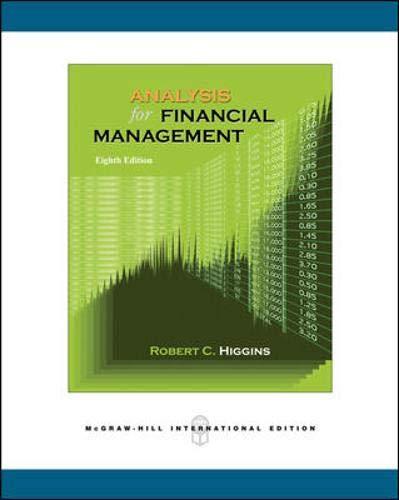Q3


Reliable Electric is considering a proposal to manufacture a new type of industrial electric motor, which would replace most of its existing product line. A research breakthrough has given Reliable a two-year lead on its competitors. The project proposal is summarized in Table 1. The report includes obvious mistakes. Read the notes to the table carefully. Which entries make sense? Which do not? Why? TABLE 1 Cash flows and present value of Reliable Electric's proposed investment ($ thousands) 1999 2000 2001 2002-2009 1. Capital expenditure -10,400 2. Research and Development -2,000 3. Working capital -4,000 4. Revenue 8,000 16,000 40,000 5. Operating costs -4,000 -8,000 -20,000 6. Overhead -800 -1,600 -4,000 7. Depreciation -1,040 -1,040 - 1,040 8. Interest -2,160 -2,160 -2,160 Income -2,000 0 3,200 12,800 0 10.Tax 0 0 420 4,480 11. Net cash flow - 16,400 0 2,780 8,320 12.Net present value = +13,932 Items Notes 1. Capital expenditure $8 million for new machinery and $2.4 million for a warehouse extension. The full cost of the extension has been charged to this project, although only about half of the space is currently needed. Since the new machinery will be housed in an existing factory building, no charge has been made for land and building. 2. Research and Development $1.82 million spent in 1998. This figure was corrected for 10 percent inflation from the time of expenditure to date. Thus 1.82 * 1.1 = $2 million. 3. Working capital Initial investment in inventories 4. Revenue These figures assume sales of 2,000 motors in 2,000, 4,000 in 2001, and 10,000 per year from 2002 though 2009. The initial unit price of $4,000 is forecast to remain constant in real terms. (Note: 'in real terms' means adjusted for inflation) 5. Operating costs These include all direct and indirect costs. Indirect costs (heat, light, power, fringe benefits, etc.) are assumed to be 200 percent of direct labor costs. Operating costs per unit are forecasted to remain constant in real terms at $2,000. 6. Overhead Marketing and administrative costs, assumed equal to 10 percent of revenue. 7. Depreciation Straight-line for 10 years. Charged on capital expenditure and working capital at the current borrowing rate of 15 percent. 8. Interest 9. Income Revenue less the sum of research and development, operating costs, overhead, depreciation, and interest. 10. Tax 35 percent of income. However, income is negative in 1999. This loss is carried forward and deducted from taxable income in 2001. 11. Net cash flow Assumed equal to income less tax. NPV of net cash flow at a 15 percent discount rate. 12. Net present value = +13,932








